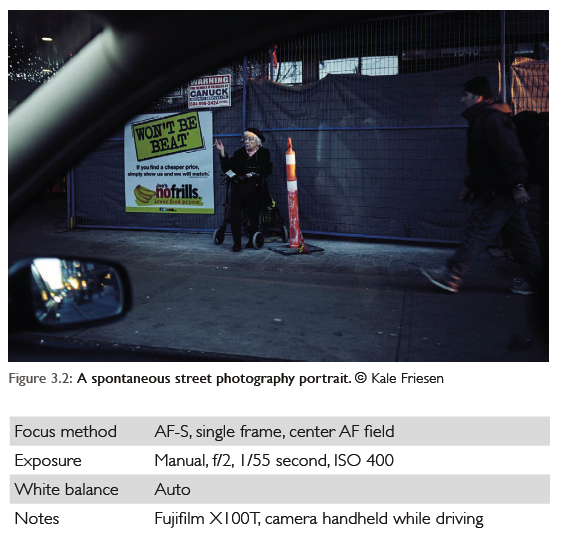 Photo by Peter Fauland, author Mastering the Fujifilm X100T and X100S
Photo by Peter Fauland, author Mastering the Fujifilm X100T and X100S
With its small, inconspicuous body and ability to easily fit in a camera bag, the Fujifilm X100 series has earned a cultlike following among today’s street photographers. Friends of Peter Fauland, author of Mastering the Fujifilm X100T and X100S, sum up the delightful process of working with this camera series as such: “The camera is effectively an extension of my right eye.”
Below we’ve listed a few of Peter’s examples from his book that tease out the strengths of the Fujifilm X100T and X100S, along with explanations about how he approaches specific shooting scenarios.
Street Photography
Street photography involves capturing life on the street spontaneously and organically. The best street photographs are as authentic as possible and are void of artificial intervention or contrivance. If you fiddle with your camera too long, you’ll miss the moment, especially when people are key elements of your composition. You need to react and focus quickly. I use a broad range of ISO values for this type of photography (e.g., ISO 200–1600 during the day and ISO 200–4000 at night), which allows me to handle a variety of lighting conditions. I also use a fairly fast shutter speed (e.g., 1/250 second) so I can freeze movement in my images even when I’m on the go. The key challenge is focusing. Depending on your speed or the speed of the subject, continuous autofocus (AF-C) with the Multi AF or Area mode is often a good choice. In AF-C mode, the camera constantly updates and refines the focus as long as the shutter button is pressed. The Multi AF mode, which is often called automatic tracking, will adjust the active AF field to follow the main subject as long as it retains enough contrast for the camera to detect it. These tools allow you to keep the image frame constant even while the subject changes position. Alternatively, you can use the Area AF mode to choose a specific AF field, establish focus on the main subject, then track the subject manually with the shutter button pressed halfway down. In both cases, the camera continuously updates the focus. With continuous shooting, or burst mode, you can capture either three or six frames per second (with the Low or High setting) while the focus keeps adjusting—a truly powerful feature. Make sure you have a fast memory card in your camera so the images can be saved quickly. I set up one of the seven shooting profiles on my camera for spontaneous street photography.

Cityscapes
Cityscapes During a stopover in Paris, the Montmartre Cemetery presented countless photographic opportunities, all of which were easily within the technical capabilities of the Fujifilm X100T. The large cemetery is latticed with narrow paths and alleys. I wanted to spontaneously react to scenes as I saw them, so I didn’t bother with my tripod. The overcast sky after a rain and the bright building facades in the background made a perfect optical counterweight to the dark and expressive tombs on either side of the cobblestones. I used the optical viewfinder to get the exact exposure I wanted; it’s the ideal window for directly assessing your shooting environment. To prevent the highlights from clipping while I retained a good level of detail in the shadows, I slightly boosted the contrast range to DR 200%. The cobblestone path in the foreground that runs from the left of the frame toward the horizon was key to my composition, so I used my 28mm wide-angle conversion lens. Focus peaking made it easyto establish my desired depth of field because its colorful highlights identified the areas of the scene that were in focus. In addition to precisely choosing a focal plane, the ability to examine the depth of field in a scene is one of the main advantages of using manual focus.

Learn more about your Fujifilm X100T/S with Peter Fauland’s complete guide, Mastering the Fujifilm X100T and X100S. Available now!
